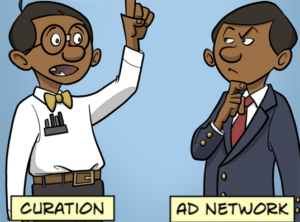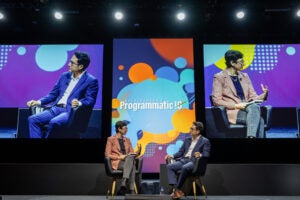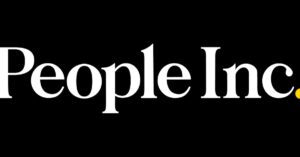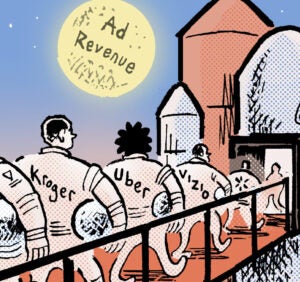 Magazine publishers need Snapchat, but Snapchat needs them, too.
Magazine publishers need Snapchat, but Snapchat needs them, too.
That may be one reason why Evan Spiegel, Snapchat’s relatively press-shy CEO, appeared Monday at the American Magazine Media Conference in New York to discuss the origins of Discover and his plans to monetize the platform.
Discover, Snapchat’s video magazine product, was created to “remove as much friction as possible to users watching [content],” Spiegel said. “We provide the technical capabilities, and the publisher provides an amazing experience.”
Last year’s launch of Snapchat Discover with storied publishing brands, including National Geographic, Food Network and People, helped Snapchat shed its reputation as a place where teens shared the kind of goofy and risqué messages that needed to immediately disappear.
The new Snapchat is a safe place for advertisers and an immersive social network and publishing platform. It’s worth $15 billion or so and has at least 200 million monthly active users.
Snapchat’s new, shorter partnerships “accommodate publishers who can’t publish 15 videos a day but want to reach our audience,” Spiegel said.
One such partner is Vanity Fair, which will do Oscars-related stories during award season. In the year since its launch, Snapchat has added Discover partners, such as The Wall Street Journal and Refinery29, while dropping others, including Warner Music and Yahoo.
While many publishers embrace the opportunity to reach Snapchat’s audience, some were also wary of Snapchat’s efforts as a content creator. When asked if Snapchat competed with the publisher in the room, Spiegel responded, “I don’t think we hold a candle to our publishing partners.” Then he mentioned Snapchat’s own efforts at content creation.
When Discover launched, for example, it created its own channel, which quickly failed. But it recently hired a reporter from CNN to cover the election by creating a political campaign show, “Good Luck America,” which some publishers see as upping the element of co-opetition in Snapchat.
Taking the stage after Spiegel, AOL CEO Tim Armstrong hinted to publishers that even though many are eager to be a partner with Discover, “there is a lot of leverage” in being a storied magazine brand.
“Most of the people in the tech business are trying to grow a brand,” Armstrong said. “It’s incredibly easy to make an app. It’s incredibly hard to build a brand.”
When it comes to monetizing Spapchat’s audience, Spiegel has an uneasy relationship with advertising, which he’s called “creepy” before, but his views have since evolved. He’s pro-native advertising, as long as it’s clearly labeled.
“Creepy is on one end of the spectrum,” Spiegel said. “There is creepy advertising, and there is advertising that doesn’t know you at all. Our goal it to make a Snapchatter feel understood. And after you understand them, do your best to make an ad relevant to them.”
That means Snapchat is reluctant to pursue retargeting ads, which Spiegel highlighted as a pet peeve. Snapchat also lets users skip ads because millennials like choice, he said.
Snapchat’s ads to date have been more native, including one that gives brands the ability to sponsor a “story” on Super Bowl Sunday or the day of the Iowa caucuses.
Snapchat is said to be starting down that road of relevance by pursuing an ads API, although Spiegel didn’t discuss that at the conference.
To monetize beyond advertising, Spiegel’s bet is on commerce.
“We have a ‘swipe up to learn more,’ and in the future that would be a foundational way to drive purchasing,” Spiegel said.
That’s not unique – WeChat and Facebook Messenger are among the apps charting this route.
But in another area, Spiegel draws a line between Snapchat and Facebook, which spent $2 billion buying virtual reality company Oculus.
“We’re not currently investing in VR,” Spiegel said. “We see it as a behavior happening one to two hours a day, not an all-day behavior, and at Snapchat we care about session frequency. That wasn’t an exciting business opportunity [for us].”














